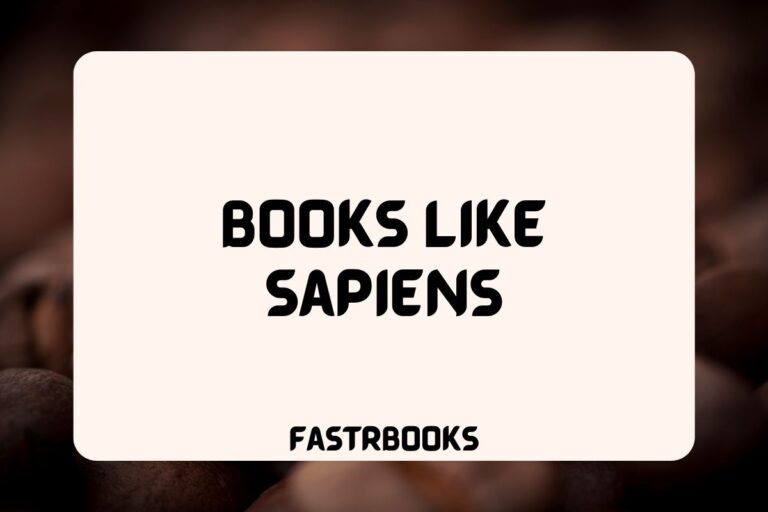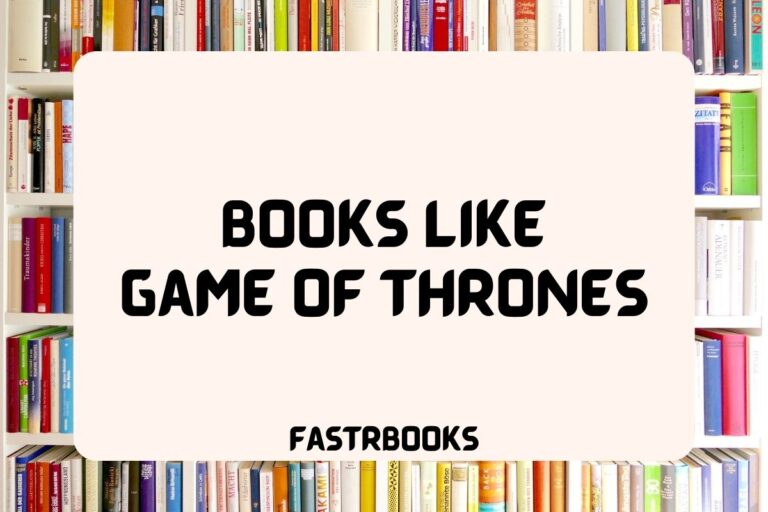12 Books Like Animal Farm
Just finished “Animal Farm” and left feeling a little… unsettled?
You’re not alone. George Orwell’s classic left a lasting impression on me, and I found myself craving more stories that explore similar themes.
So, I embarked on a reading adventure, searching for books that capture that same chilling blend of social commentary and animal allegory.
Buckle up, fellow readers, because here are some fantastic reads that will transport you to worlds both familiar and frighteningly strange!
Books Like Animal Farm
1. 1984 by George Orwell
“1984” is a dystopian novel that presents an oppressive world where the government, led by the Party and its figurehead Big Brother, exercises total control over its citizens, including their thoughts. Through the protagonist, Winston Smith, the novel explores themes of surveillance, propaganda, and the abuse of power.
Orwell’s chilling depiction of a society under constant surveillance and the manipulation of truth has had a profound impact on discussions about privacy, freedom, and the nature of tyranny.
Major Similarities:
Like “Animal Farm,” “1984” is also written by George Orwell and shares the theme of oppressive control and the manipulation of truth by those in power.
Both novels use their settings to explore the dangers of totalitarianism, though “Animal Farm” does so through allegory and satire, while “1984” adopts a more direct, bleak portrayal of dystopian life.
2. Brave New World by Aldous Huxley
“Brave New World” presents a futuristic society where individuals are conditioned from birth to accept their social status within a caste system, in a world government that uses technology and psychological manipulation to maintain order and consumer satisfaction.
The novel follows Bernard Marx and John the Savage as they struggle against the society’s norms. Huxley’s work is a critique of the pursuit of pleasure and stability at the expense of individuality and freedom.
Major Similarities:
Both “Animal Farm” and “Brave New World” examine the consequences of a society that has surrendered individual freedom for the sake of an imposed order and stability.
While “Animal Farm” focuses on the corrupting influence of power and the distortion of ideals, “Brave New World” explores the dangers of sacrificing human values for technological and societal efficiency.
3. Fahrenheit 451 by Ray Bradbury
“Fahrenheit 451” is set in a future America where books are outlawed and “firemen” burn any that are found. The story follows Guy Montag, a fireman who becomes disillusioned with his role in suppressing knowledge and begins to seek out and preserve the very items he once destroyed.
Bradbury’s narrative is a powerful defense of literature and intellectual freedom, set against a backdrop of censorship and societal apathy.
Major Similarities:
Like “Animal Farm,” “Fahrenheit 451” deals with themes of censorship, the abuse of power, and the manipulation of society through control of information.
Both novels warn of the dangers of allowing power to become concentrated in the hands of a few, and the importance of knowledge and critical thinking as means of resistance.
4. Lord of the Flies by William Golding
“Lord of the Flies” is about a group of British boys stranded on an uninhabited island who try to govern themselves, with disastrous results.
The novel explores the descent into savagery and the loss of innocence, as the structured society the boys attempt to create quickly devolves into chaos and violence. Golding uses the isolated setting to examine the inherent evil within humanity and the thin veneer of civilization.
Major Similarities:
Both “Animal Farm” and “Lord of the Flies” explore the themes of governance, power, and the corrupting nature of power.
They each present a microcosm of society to examine how quickly and easily societal structures can break down when power is abused or concentrated in the hands of the few, highlighting the dark aspects of human nature.
5. The Handmaid’s Tale by Margaret Atwood
“The Handmaid’s Tale” is set in a dystopian future where the United States has become the theocratic, authoritarian state of Gilead. The novel follows Offred, a Handmaid under the new social order, who is subjected to oppression and the denial of her rights and identity.
Atwood’s work is a profound commentary on the role of women in society, reproductive rights, and the dangers of blending religious and political power.
Major Similarities:
Similar to “Animal Farm,” “The Handmaid’s Tale” explores themes of power, oppression, and the use of propaganda to control the populace. Both novels highlight the importance of resistance against tyranny and the ways in which societies can be manipulated by those in power.
While “Animal Farm” uses the allegory of farm animals to discuss the corruption of revolutionary ideals, “The Handmaid’s Tale” focuses on gender dynamics and the control of women’s bodies and roles in society.
6. The Road to Wigan Pier by George Orwell
“The Road to Wigan Pier” is a non-fiction work by George Orwell, documenting his observations of working-class life in the north of England.
The first part of the book describes the harsh living conditions and employment environments of the coal miners, while the second part is an extended essay on Orwell’s middle-class upbringing and the development of his socialist political philosophy.
This book combines reportage with personal reflection, critically examining social injustice and the class divide.
Major Similarities:
Although not a novel like “Animal Farm,” “The Road to Wigan Pier” shares Orwell’s acute awareness of social injustice and the dangers of ignoring the plight of the underprivileged.
Both works critique societal structures and the distribution of power, with a clear message about the importance of empathy, social responsibility, and the need for societal change.
7. We by Yevgeny Zamyatin
“We” is a dystopian novel set in a future where citizens live under the surveillance of an omnipotent state, known only as the One State, governed by the logic of mathematics and reason devoid of emotion.
The protagonist, D-503, begins to experience feelings that challenge the state’s strict codes, leading him to question the nature of freedom and individuality. Zamyatin’s novel is considered one of the first works of dystopian fiction, influencing many later authors.
Major Similarities:
Like “Animal Farm,” “We” explores the themes of control, conformity, and the suppression of individual freedoms for the supposed good of the collective.
Both novels present a society where the ruling powers distort reality to maintain their grip on power, emphasizing the importance of individual thought and resistance against oppressive regimes.
8. The Wave by Todd Strasser
“The Wave” is based on a true experiment that took place in a California high school in 1969, where a teacher created a movement called “The Wave” to demonstrate to his students the appeal and dangers of fascism.
The experiment spirals out of control as the movement grows, highlighting how easily freedom can be surrendered for the allure of belonging and power. The novel examines themes of authority, the allure of power, and the importance of critical thinking.
Major Similarities:
Both “Animal Farm” and “The Wave” demonstrate how quickly and easily societies can be led astray by charismatic leaders and the promise of a better future.
They explore the psychology behind the submission to authority and the loss of individual freedom in exchange for a sense of unity or greater good, warning against the dangers of unchecked power and the importance of dissent.
9. The Iron Heel by Jack London
“The Iron Heel” is a dystopian novel that predicts the rise of an oligarchic tyranny in the United States. It is presented as a historical document, with footnotes from a future perspective, and follows the lives of the protagonist Ernest Everhard and his wife Avis as they resist the oppressive Oligarchy.
The novel explores themes of social injustice, class struggle, and the fight for workers’ rights, blending adventure with a critique of capitalism and a prophecy of socialist uprising.
Major Similarities:
Similar to “Animal Farm,” “The Iron Heel” deals with themes of revolution and the struggle against an oppressive ruling class.
Both novels critique the abuse of power and explore the complexities of social and political change, highlighting the potential for corruption and the betrayal of revolutionary ideals.
10. It Can’t Happen Here by Sinclair Lewis
“It Can’t Happen Here” is a satirical political novel that depicts the rise of a fascist regime in the United States led by President Berzelius “Buzz” Windrip, who rises to power by promising drastic economic and social reforms while promoting a return to patriotism and traditional values.
As Windrip takes control, the country is transformed into a totalitarian state, with the suppression of dissent, the establishment of concentration camps, and the erosion of American democracy. The story follows a small-town newspaper editor, Doremus Jessup, as he joins an underground resistance movement.
Major Similarities:
Both “Animal Farm” and “It Can’t Happen Here” explore the themes of authoritarianism, the manipulation of public opinion, and the erosion of democratic principles.
They warn of the fragility of freedom and the ease with which a society can descend into tyranny when power is concentrated in the hands of a charismatic leader who exploits fear and division.
11. Parable of the Sower by Octavia E. Butler
“Parable of the Sower” is set in a future America where society has collapsed due to climate change and economic hardships. The novel follows Lauren Olamina, a young woman who possesses a unique empathy ability, as she navigates a dangerous and chaotic world.
Lauren develops a new philosophical and religious system, Earthseed, aimed at fostering community and resilience in the face of adversity. Butler’s work is a profound exploration of survival, identity, and the capacity for hope and adaptation in a changing world.
Major Similarities:
Like “Animal Farm,” “Parable of the Sower” deals with themes of societal collapse and the quest for power and control in the vacuum left by disintegration.
Both novels examine the human response to oppression and the potential for new ideologies to rise from the ashes of the old, highlighting the importance of adaptability, community, and the pursuit of a better future.
12. The Giver by Lois Lowry
“The Giver” is a young adult dystopian novel set in a seemingly utopian society where pain, suffering, and choice have been eliminated to create a harmonious community.
The story centers on Jonas, a 12-year-old boy who is selected to inherit the position of Receiver of Memory, the person who stores all the past memories of the time before Sameness. As Jonas receives these memories, he begins to question the cost of his society’s enforced conformity and embarks on a journey to understand the true meaning of freedom and individuality.
Major Similarities:
Both “Animal Farm” and “The Giver” explore the consequences of a society that seeks to eliminate all forms of discord and difference, emphasizing the importance of memory, history, and individuality in the face of authoritarian control.
While “Animal Farm” provides a critique of political systems that lead to oppression, “The Giver” examines the loss of personal freedom and the value of human emotions and experiences, challenging readers to consider the balance between societal order and personal liberty.






